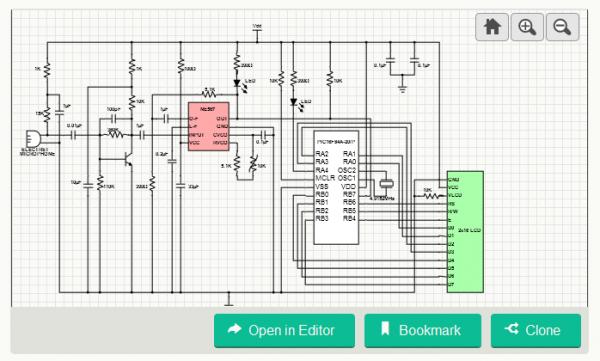Summary of Morse Code Decoder
This project decodes Morse code by capturing audio signals via an electret microphone and amplifying them through a transistor amplifier that also filters the signal. A NE567 PLL tone detector then converts the audio tones into a digital sequence matching the Morse code dots and dashes. This output is fed into a PIC16F84 microcontroller for processing, while an LED provides visual feedback for tuning the receiver.
Parts used in the Morse Code Decoder:
- Electret microphone
- Transistor (for common emitter follower amplifier)
- Coupling capacitors
- Feedback capacitor
- NE567 PLL tone detector/decoder
- PIC16F84 microcontroller
- LED (receiver tuning aid)
Morse code is used in telecommunication; it is a method of transmitting and receiving coded information. Each character (letter or numeral) is coded/represented by a unique sequence of dots and dashes. Compared to voice, Morse code is less sensitive to poor signal conditions, yet still comprehensible to humans without a decoding device, therefore, a useful alternative to synthesized speech for sending automated data to skilled listeners (radio operator) on a voice channel.

The project’s first part is composed of an electret microphone followed by a common emitter follower amplifier; this transistor amplifier also acts as a first level bandpass filter. Its band edges are determined by the size of the coupling capacitors, and the feedback capacitor between the transistor’s base and collector terminals. The next part of the project is the PLL (phase lock loop) tone detector/decoder NE567; its output is a one-zero pattern replicating the dots-and-dashes sequence of the received signal. This output drives both an input to the PIC16F84 microcontroller and an LED that is used as a receiver tuning aid.
For more detail: Morse Code Decoder
